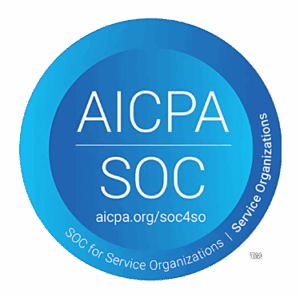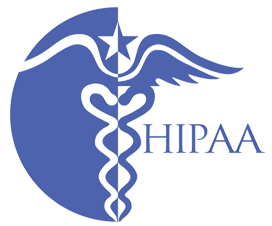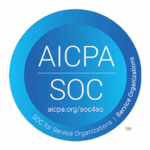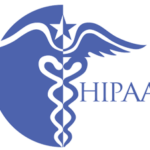
The American Medical Association (AMA) has released the comprehensive 2025 updates to the Current Procedural Terminology (CPT®) code set. With 420 total changes—comprising 270 new codes, 112 deletions, and 38 revisions—these updates represent one of the most significant annual revisions in recent years. The changes reflect the healthcare industry’s rapid technological evolution, emerging treatment modalities, and shifting care delivery models.[1]
Strategic Overview and Implications
The 2025 updates demonstrate several key trends in healthcare delivery:
- Digital Transformation Acceleration: The creation of dedicated telemedicine codes signals the permanent integration of virtual care into mainstream healthcare delivery models.
- Precision Medicine Expansion: The significant increase in proprietary laboratory analysis codes (37% of new additions) underscores the growing clinical implementation of genetic and molecular diagnostics in routine care.
- AI Integration: The expansion of AI-specific coding taxonomy continues for a second consecutive year, reflecting the increasing role of artificial intelligence in clinical decision support and diagnostic processes.
- Minimally Invasive Innovations: Many new codes focus on less invasive therapeutic approaches across multiple specialties, aligning with the ongoing shift toward outpatient procedures and reduced recovery times.
- Advanced Cellular Therapies: The dedicated coding structure for CAR-T and cellular therapies highlights the transition of these treatments from experimental to established clinical interventions.
Detailed Analysis by Section
Evaluation and Management Services
The creation of a new E/M category specifically for Telemedicine Services represents a landmark recognition of virtual care’s permanent place in healthcare delivery. This update includes:
- 16 specialized codes distinguishing between audio-visual services (98000-98007) and audio-only services (98008-98015), acknowledging the different clinical workflows and resource requirements
- Code 98016 for patient-initiated triage evaluations, supporting more efficient care coordination and appropriate utilization
- These changes support value-based care initiatives by providing more accurate ways to document and bill for services delivered outside traditional settings
The interprofessional consultation guideline updates further facilitate team-based care approaches, particularly important for medically complex patients requiring multispecialty management.
Surgery Section Innovations
Integumentary System
The eight new skin cell suspension autograft codes (15011-15018) reflect advancements in burn treatment and reconstructive techniques, potentially reducing healing time and improving cosmetic outcomes compared to traditional split-thickness grafts.
Musculoskeletal System
Code 25448 for intercarpal or carpometacarpal arthroplasty by suspension represents an important advancement in hand surgery techniques. The new Category III code 0869T for bone-substitute material injection addresses the challenging clinical scenario of hardware fixation augmentation, particularly relevant in patients with compromised bone quality.
Cardiovascular System
The extensive cardiovascular system updates reveal the rapid pace of innovation in cardiac interventions:
- Algorithmic ECG generation codes (0903T-0905T) demonstrate the integration of computational analysis into cardiac diagnostics
- The cardiac contractility modulation-defibrillation (CCM-D) system codes (0915T-0925T) represent a significant advancement in heart failure management, potentially addressing patients who respond poorly to conventional therapies
- The wireless left atrial pressure sensor code (0933T) enables continuous monitoring capabilities that could revolutionize heart failure management through early intervention before symptom onset
Hemic and Lymphatic Systems
The creation of a dedicated Cellular and Gene Therapies sub-category with four comprehensive codes (38225-38228) acknowledges the increasing standardization of CAR-T therapy workflows. This standardization will facilitate more accurate reimbursement for these complex and resource-intensive treatments, potentially improving access for appropriate patients.
Digestive System
The five new codes for open excision or destruction of intra-abdominal tumors (49186-49190) provide greater specificity in documenting complex oncologic procedures. The normothermic machine perfusion codes for liver allografts (0894T-0896T) represent a significant advancement in transplantation technology that may expand the viable donor pool and improve post-transplant outcomes.
Urinary System
The transurethral ablation transducer code (51721) for prostate tissue ablation reflects the continuing evolution of minimally invasive approaches to benign prostatic hyperplasia. The prostatic urethral scaffold procedure codes (0941T-0943T) represent innovative approaches to urologic conditions that may offer better quality-of-life outcomes for selected patients.
Nervous System
The six new fascial plane block codes (64466-64474) reflect the growing adoption of regional anesthesia techniques that may reduce opioid requirements. The integrated neurostimulation system codes (0908T-0912T) demonstrate advances in neuromodulation that offer more targeted therapeutic approaches for chronic conditions.
Radiology: Safety Innovations
The new Magnetic Resonance Safety Implant/Foreign Body Procedures subcategory addresses a critical patient safety concern. These six codes (76014-76019) formalize the complex workflows required to safely perform MRI examinations on patients with metallic implants or foreign bodies, potentially expanding access to crucial diagnostic imaging for these patients while ensuring appropriate resource allocation and reimbursement.
Pathology and Laboratory: Diagnostic Precision
The substantial expansion of proprietary laboratory analysis codes reflects the accelerating integration of molecular and genetic diagnostics into clinical practice. These advanced testing methodologies enable more precise diagnosis, prognosis assessment, and treatment selection across multiple specialties, particularly oncology, neurology, and rare disease management.
Medicine: Streamlined Immunization Coding
The consolidation of 47 COVID-19 vaccination administration codes into a single code (90480) represents a significant administrative simplification. This rationalization acknowledges the transition of COVID-19 vaccines from emergency interventions to routine preventive care, streamlining documentation and billing processes while maintaining the ability to track vaccination trends.
Implementation Considerations for Healthcare Organizations
Healthcare providers and organizations should consider these strategic actions to prepare for the 2025 CPT® updates:
- Staff Education: Develop comprehensive training programs targeting key changes relevant to your practice specialty
- Documentation Templates: Update EHR templates to capture the specific clinical elements required for new code requirements
- Technology Assessment: Evaluate existing systems to ensure compatibility with new coding requirements, particularly for telemedicine services
- Financial Impact Analysis: Model the potential revenue impact of transitioning to the new code sets, especially for high-volume procedures affected by the changes
- Payer Alignment: Proactively communicate with major payers regarding implementation timelines and interpretation of new code requirements
Conclusion
The 2025 CPT® code updates reflect healthcare’s ongoing evolution toward more precise, personalized, and technology-enabled care delivery. Healthcare organizations that strategically prepare for these changes will be better positioned to ensure accurate reimbursement, maintain compliance, and optimize clinical workflows in the coming year.
For detailed guidance specific to your specialty area, consult the complete AMA CPT® 2025 code set and associated guidelines to ensure full compliance and optimal implementation.
Would you like to learn how Rapidcare can help with your medical coding, maximize reimbursement, and optimize your revenue cycle? Contact us today.
[1] American Medical Association. CPT® 2025 code set. https://www.ama-assn.org/cpt-code-set [Accessed March 17, 2025]
CPT is a registered trademark of the American Medical Association.
The Rapid Care team is here to help
Our dedicated team is committed to providing prompt and personalized assistance to ensure your questions are answered and issues are resolved quickly and efficiently.



The Rapid Care team is here to help
Our dedicated team is committed to providing prompt and personalized assistance to ensure your questions are answered and issues are resolved quickly and efficiently.




